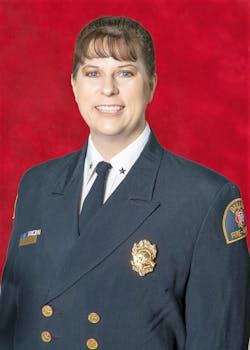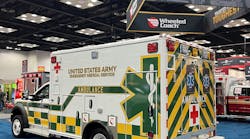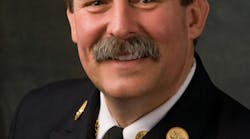According to the U.S. Department of Justice’s annual FBI report, the U.S. has averaged two active shooter incidents per month for the past four years. It is no longer rare; it’s a regular event. Unfortunately, the rise in terrorism has blurred the lines between fire, police and EMS. Fire/EMS members are donning ballistic gear to reach victims while police officers are providing medical care and transporting victims. Emergency responders across the country are developing procedures that require all three units to work as a team.
Henry Ford stated, “Coming together is a beginning, staying together is progress, and working together is success.” The current state of violence has certainly brought public service together and many have developed ongoing relationships, but are they working together in a very real sense? Dallas Fire-Rescue (DFR) and the Dallas Police Department (DPD) came together in 2014 to establish a joint active shooter plan. Both departments did a great deal of research and development. In 2016, DFR began instruction for its members to be followed by some tabletop exercises and drills.
About a third of the members in DFR were trained on July 7, 2016 when an active shooter shot 12 police officers and two civilians causing the death of five of those officers. Being there that night, I saw firsthand how we all came together to handle the situation, and it went well operationally. A unified command was quickly established that operated seamlessly. Though there were a few more challenges initially at the ground level, they were quickly resolved, and operations ran smoothly for the duration of the night. It demonstrated we must truly work together at all levels if we want to be successful in the heat of the moment. Even if both fire/EMS and police have the same procedure, it needs to be trained on together to prevent those initial hurdles.
Rescue Task Force
In the months following the July 7 incident, all aspects of the active shooter plan were reevaluated. DFR Chief Gil Pena, who had done significant research and work on the plan, coordinated with DPD’s Reality-Based Training Team for our paramedics and officers to engage in superb real-scenario drills with the police trainers for operating in a Rescue Task Force (RTF) at a vacant elementary school. However, the DPD training team will not be first on scene, and the patrol officers hadn’t gone through the RTF training.
A grant was secured, and a massive training collaboration including DPD patrol officers was underway. This training was aimed at putting together for practice the people who would be together in the real moment. This undertaking was coordinated by DFR Training Captain Jay Prigmore, Training Captain Kevin Phillips and EMS Lieutenant Marshall Cook. The training occurred twice a day, every weekday, for approximately nine months. DFR Captain Shane Farmer provided the bulk of the instruction while DPD’s Reality-Based Training Team, headed by Lieutenant Jose Garcia and Sergeant Michael Hoyt, led the drills and coordination for DPD. The training included 1,800 patrol officers raising the number of members trained to almost 3,000 for Dallas Police Department and Dallas Fire-Rescue.
Each training included classroom discussion before the initial drill and greater discussion and review after the drills. This step was critical to increase understanding of the other group’s responsibilities and actions. Two scenarios were performed for each class. The second scenario always went more smoothly because of having the knowledge and experience missing during the first one. It was particularly beneficial for introducing the Incident Command System (ICS) to the patrol officers. Though the fire service uses ICS during normal operations, it is fairly foreign to most police officers. The exercises clearly demonstrated its importance on larger scale incidents.
Practice makes perfect
The overwhelming consensus from participants is it must be done on a regular basis; not a “one and done” or just to check a box. This training focused on the EMS branch of ICS, and DPD has requested to have future training include more of a unified command component. The training also demonstrated the need for plain language that both sides understand. For example, “Clear” means one thing to police and another to Fire/EMS. The training was held at DFR’s Fire Academy but another site where the scenarios could be spread out more would be beneficial.
Whether or not the Rescue Task Force concept is utilized in the future, the collaboration and training are invaluable. It improves that critical relationship between emergency responders. All public service agencies recognize the need to prepare for acts of terrorism. If “practice makes perfect,” then fire, police and EMS must all be part of that practice.






